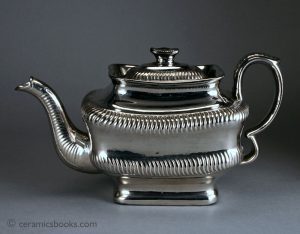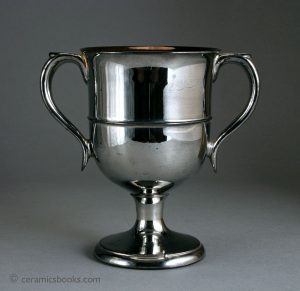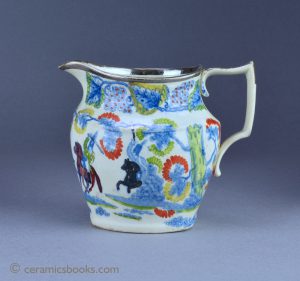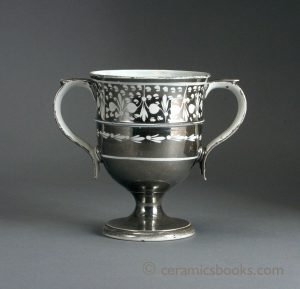Lustreware

Lustreware (or lustre ware), is a form of decoration achieved using various salts of metal oxides to create a range of coloured metallic effects on top of lead-
Silver lustre (created with platinum oxide) was sometimes used to completely cover pots so that they looked like they were made of silver. These ‘solid’ silver lustrewares are sometimes called ‘Poor man’s silver’, however they were popular with both the middle classes in lamp lit city houses and the lower class poor in humble candle lit cottages, and looked equally effective in either setting.
Silver resist lustreware is a variation where a resisting liquid that contained wax or honey was hand-
Other lustrewares include copper lustre (created with minute amounts of gold) which usually adorns simple utilitarian red earthenwares but also occurs on white bodied pearlware where the same lustre salts produce pink lustre instead of copper. Pink lustreware is often associated with Sunderland but it was also made elsewhere, including Staffordshire. English lustreware was produced from the very early C19th onwards.
























